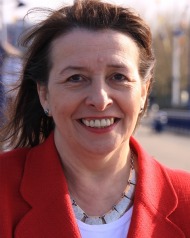
The present constituency was created from roughly equal numbers of voters from the former constituencies of Woolwich, in the borough of Greenwich, and Erith and Crayford in the borough of Bexley. It includes the Plumstead and Abbey wood areas of Greenwich and the Erith, Lesnes Abbey, Belvedere and Northumberland Heath areas of Bexley. It also includes the Thamesmead area which spans the boundary between the two boroughs.
John Austin was the MP for this constituency from its creation for the 1997 general election until he stepped down at the 2010 election. The seat has been held for Labour by Teresa since May 2010.
 In the north of the constituency is a grade I listed building, the Crossness sewage works. Crossness houses the Victorian beam engines, which have been restored by the Crossness Engines Trust, a registered charity that since 1987 has overseen the restoration project. In the mid 19th century, Crossness was part of the visionary work of Sir Joseph Bazalgette, who built the London sewer network that cleaned up London and wiped out the cholera epidemics that had previously killed hundreds of Londoners every year.
In the north of the constituency is a grade I listed building, the Crossness sewage works. Crossness houses the Victorian beam engines, which have been restored by the Crossness Engines Trust, a registered charity that since 1987 has overseen the restoration project. In the mid 19th century, Crossness was part of the visionary work of Sir Joseph Bazalgette, who built the London sewer network that cleaned up London and wiped out the cholera epidemics that had previously killed hundreds of Londoners every year.
Thamesmead was built on reclaimed marshland in the 1960s, which was formerly part of the grounds of the Royal Arsenal. The Royal Arsenal has played an important role in the area’s history. At the outbreak of war in 1914 it employed some 80,000 people, however the ordnance factory closed in 1967 and now the Royal Arsenal site, situated just over the constituency boundary in Greenwich and Woolwich, is a major commercial and housing development.
 Like many other urban areas, Erith and Thamesmead has a long and proud multicultural tradition. It is an area where people come to settle. One of the local primary schools is called Windrush, in honour of those who came from the West Indies in the ’50s and ’60s to help Britain rebuild after the war. Many Vietnamese boat people also put down roots in the area in the 1970s. Erith is also the place where Alexander Selkirk, the real-life model for Robinson Crusoe, landed in 1711, when he returned home after many years on a desert island. Over the past decade Erith and Thamesmead has also had a fast-growing African community that has settled in the area.
Like many other urban areas, Erith and Thamesmead has a long and proud multicultural tradition. It is an area where people come to settle. One of the local primary schools is called Windrush, in honour of those who came from the West Indies in the ’50s and ’60s to help Britain rebuild after the war. Many Vietnamese boat people also put down roots in the area in the 1970s. Erith is also the place where Alexander Selkirk, the real-life model for Robinson Crusoe, landed in 1711, when he returned home after many years on a desert island. Over the past decade Erith and Thamesmead has also had a fast-growing African community that has settled in the area.

